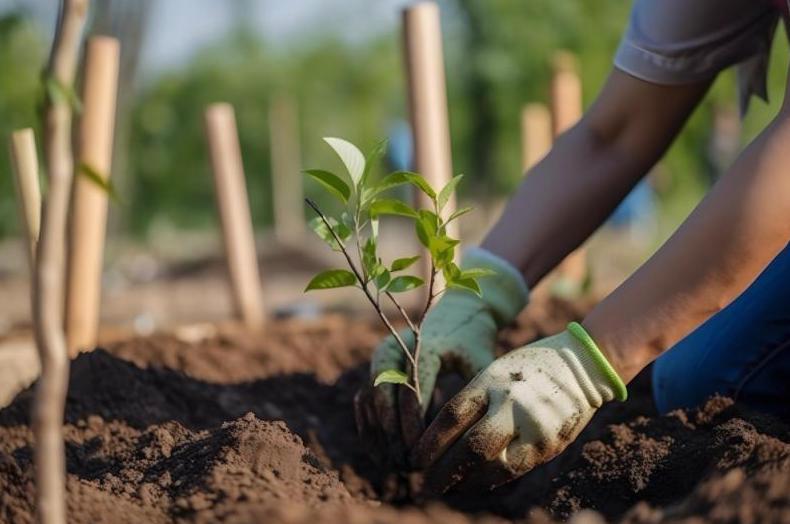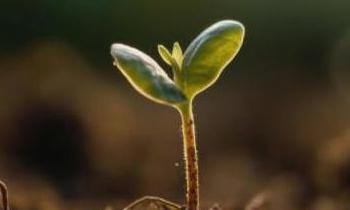
In a world where the green canopy of nature is often overshadowed by concrete, planting trees and shrubs becomes an act of restoration, a powerful step towards replenishing our planet's precious biodiversity. It is a journey that begins with a simple yet profound act—digging a hole in the Earth, cradling a small sapling or seedling, and nurturing it with care. As we embark on this endeavor, we find ourselves not only cultivating life but also sowing the seeds of hope, transforming barren landscapes into thriving habitats, and leaving an enduring legacy for generations to come.
Start by carefully selecting the ideal location for your trees and shrubs. Consider factors such as sunlight exposure, soil drainage, proximity to other plants, and future growth potential. A well-chosen location will provide the best growing conditions for your plants and ensure their long-term success. Additionally, think about the purpose of the planting. Are you aiming to provide shade, create privacy, or add aesthetic value to your landscape? Understanding your goals will help you choose the right species and placement.
Before planting, it's crucial to prepare the soil properly. Begin by removing any weeds, rocks, or debris from the planting area. Loosen the soil using a garden fork or tiller to improve its structure and promote root penetration. If the soil is compacted or of poor quality, consider adding organic matter like compost or well-rotted manure to enhance its fertility and drainage. This amendment will provide essential nutrients to the plants and improve the soil's ability to retain moisture.
When digging the planting hole, make it wider and slightly shallower than the root ball or container of the tree or shrub. The width of the hole should be two to three times wider than the root ball, allowing ample space for the roots to spread and establish. The depth of the hole should be such that the plant's root flare (the point where the roots start to flare away from the trunk) is level with or slightly above the surrounding soil. Planting too deep can suffocate the roots and inhibit healthy growth. By creating a spacious hole, you encourage the roots to extend into the surrounding soil and establish a strong foundation for the plant.
Once you have the plant ready for planting, take a close look at the roots. Healthy roots should be firm, white, and well-distributed. Inspect for any signs of damage, such as rotting, discoloration, or excessive circling. If you notice any problematic roots, gently untangle or trim them to prevent future issues. Removing any damaged or circling roots ensures that the plant can develop a healthy root system and establish itself more effectively in its new environment.
If you encounter damaged or excessively long roots during the inspection, it's important to prune them. Using sharp, clean pruning shears, make clean cuts to remove any broken or diseased roots. Pruning helps stimulate the growth of new, healthy roots and prevents the spread of diseases or potential girdling issues. However, be mindful not to over-prune, as the plant still needs an adequate root system to support its growth and nutrient uptake.
Gently place the tree or shrub into the prepared hole, ensuring that it is centered and straight. Adjust the depth as needed to align the top of the root ball with the surrounding soil. Avoid placing the plant too deep, as this can hinder oxygen exchange and lead to suffocation of the roots. Position the plant so that the root flare is at or slightly above ground level. Proper placement provides a stable foundation for the plant and ensures that the root flare is not buried, as it plays a crucial role in the plant's health and stability.
Begin backfilling the hole with the soil you removed while digging. Gradually add the soil, gently firming it around the roots with your hands. Take care not to compact the soil excessively, as this can restrict the movement of air and water around the roots. Fill the hole completely, ensuring there are no air pockets remaining. Proper backfilling helps establish good soil-to-root contact and provides stability to the plant.
After planting, thoroughly water the tree or shrub to settle the soil and provide initial hydration to the roots. Slowly apply water around the base of the plant, allowing it to penetrate deeply. This encourages the roots to grow downward in search of water and promotes strong establishment. After the initial watering, continue to monitor the soil moisture regularly and water as needed. The frequency of watering depends on various factors, such as weather conditions, plant species, and soil type. A consistent and adequate water supply is crucial during the establishment phase to support healthy growth and development.
Applying a layer of mulch around the base of the tree or shrub provides several benefits. Spread a 2-4 inch layer of organic mulch, such as wood chips, bark, or straw, over the soil surface. Mulch helps conserve soil moisture by reducing evaporation, suppresses weed growth, moderates soil temperature fluctuations, and provides a protective barrier against extremes of hot and cold weather. However, ensure that the mulch does not come in direct contact with the trunk or stems, as this can create a favorable environment for rot or pests. Leave a small gap around the plant's base to promote air circulation and prevent moisture-related problems.
In certain situations, staking may be necessary to provide support to newly planted trees or top-heavy shrubs. Assess the plant's stability and the prevailing wind conditions in your area. If staking is required, insert sturdy stakes into the ground outside the root ball and use soft ties to secure the plant. Be cautious not to tie the plant too tightly, allowing for some natural movement, which encourages trunk and root development. Staking should be temporary, and you should regularly monitor the plant's stability to determine when it can support itself independently.
If you have wildlife in your area that may cause damage to newly planted trees or shrubs, consider implementing protective measures. Install physical barriers such as fencing, netting, or tree guards to prevent browsing, rubbing, or other forms of animal damage. Monitor the plants regularly and make adjustments as needed. As the plants grow and become established, they will be more resilient to wildlife and less prone to damage.
After planting, establish a regular watering routine to ensure the plants' health and growth. Water deeply and thoroughly, allowing the water to reach the entire root zone. Provide sufficient water to keep the soil moist but not waterlogged. The frequency of watering depends on various factors such as weather conditions, plant species, and soil type. During dry periods, pay extra attention to watering needs and adjust accordingly. Monitor the soil moisture consistently, checking the soil depth with your finger or a soil moisture meter, and water when necessary. Remember, deep watering promotes deep root growth and helps the plant become more resilient to drought conditions.
Regularly monitor your trees and shrubs for signs of pests or diseases. Inspect the leaves, stems, and trunk for any abnormal discoloration, wilting, spots, lesions, or signs of insect activity. Early detection allows for timely intervention and effective treatment. Consult with local gardening resources, extension services, or arborists to identify specific pests or diseases common in your area and implement appropriate prevention or control measures. Encouraging beneficial insects, practicing good sanitation, and providing optimal growing conditions will help keep pests and diseases in check.
Proper fertilization plays a vital role in the long-term health and vigor of trees and shrubs. Before applying any fertilizers, conduct a soil test to determine the nutrient deficiencies or imbalances. This analysis will guide you in selecting the appropriate fertilizers and application rates. Use slow-release fertilizers specifically formulated for woody plants and follow the manufacturer's instructions. Apply fertilizers during the recommended seasons, typically in early spring or fall, when the plants can efficiently utilize the nutrients. Avoid excessive or untimely applications, as this can stress the plants or contribute to nutrient runoff. Remember, fertilizers are supplements to proper soil preparation and organic matter incorporation.
Pruning is an essential practice for maintaining the shape, structure, and overall health of trees and shrubs. Regular pruning promotes strong branch attachment, improves airflow and light penetration, and enhances plant aesthetics. Prune for shape and form during the dormant season or before the new growth emerges. Remove any dead, damaged, or crossing branches. Avoid excessive pruning, as it can remove too much foliage and stress the plant. Understand the specific pruning requirements of the tree or shrub species you're planting, as some may have unique growth habits or pruning preferences.
Weed competition can significantly impact the growth and establishment of newly planted trees and shrubs. Regularly inspect the planting area and remove any weeds that emerge. Weeds compete for nutrients, water, and sunlight, potentially stunting the growth of your plants. Use hand pulling, hoeing, or mulching to keep weeds under control. Be cautious when weeding around the plants to avoid damaging their roots. Applying a layer of mulch also helps suppress weed growth and reduces the need for frequent weeding.
Keep a close eye on the growth and overall health of your trees and shrubs. Monitor the development of new leaves, stems, and branches. Look for signs of healthy foliage, steady growth, and appropriate coloration. Inspect the plant regularly for any abnormal symptoms, such as yellowing leaves, stunted growth, or wilting. Address any issues promptly, as early intervention is key to preventing larger problems. Consider maintaining a gardening journal to track growth patterns, observations, and care activities for future reference.
Proper sunlight exposure is vital for the growth and vitality of trees and shrubs. Ensure that your plants receive the recommended amount of sunlight based on their specific requirements. Observe the sunlight patterns in your garden throughout the day and the changing seasons. If necessary, prune nearby trees or shrubs to create more light or consider transplanting shade-tolerant plants to shadier areas. Strive to provide the optimal balance of sunlight and shade to promote healthy photosynthesis and overall plant vigor.
Regular inspections are crucial to identify any potential issues and ensure the ongoing health of your trees and shrubs. Check for signs of pests, diseases, or structural problems. Look for insect activity, abnormal growth patterns, or any physical damage caused by storms or animals. Inspect the roots, stems, branches, and leaves. Monitor the overall appearance and growth rate of the plants. Catching problems early allows for timely intervention and prevents more extensive damage or decline.
Congratulations on successfully planting your trees and shrubs! Take the time to appreciate and enjoy the beauty and benefits they bring to your landscape. Watch as they grow, mature, and enhance your outdoor space. Regularly care for and maintain your plants, providing the necessary water, nutrients, and attention they need. As they thrive, you will be rewarded with shade, privacy, colorful blooms, and the satisfaction of nurturing nature.

Deforestation, a pressing global issue, refers to the permanent removal of trees and vegetation from forests.
01-04-2023

In our ever-evolving world, the importance of ecological balance cannot be overstated. As we strive to combat
28-02-2023

In an era dominated by climate change and environmental concerns, planting trees emerges as a powerful solutio
28-02-2023

The sight of lush green trees thriving and providing a refreshing atmosphere is truly a marvel to behold. Howe
21-02-2023

Are you ready to embark on a gardening adventure and bring life to your surroundings? The key to successful pl
19-12-2022